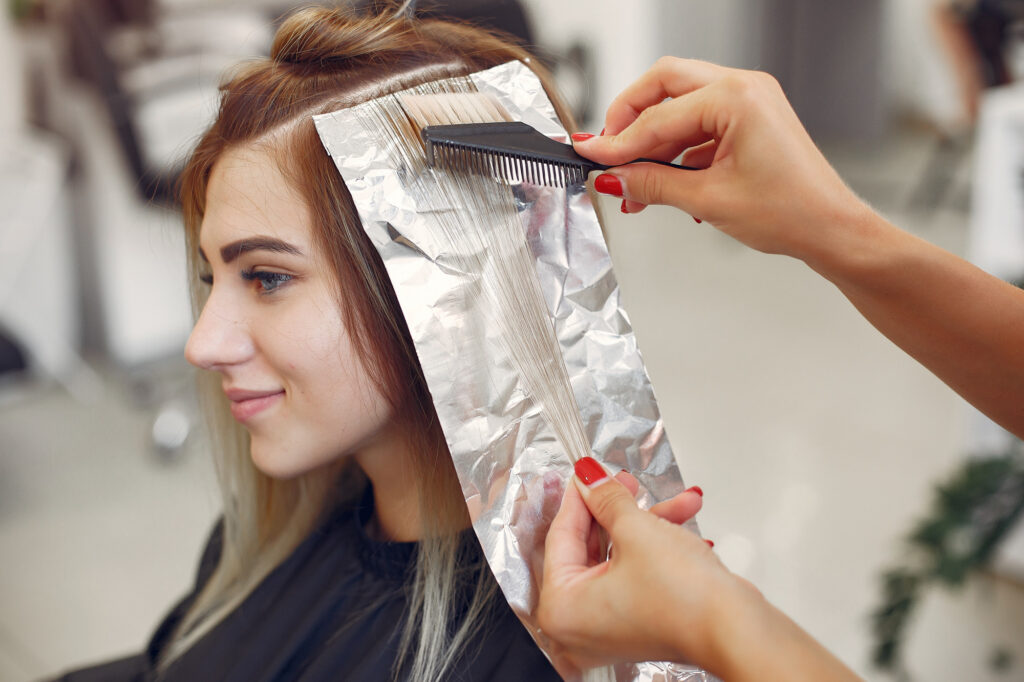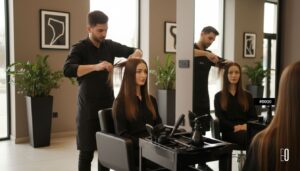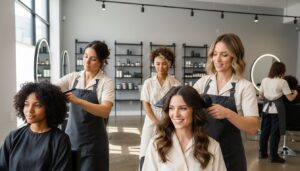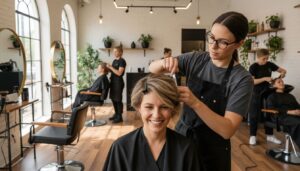Frizzy ends, limp strands, and unruly shapes can sneak up on anyone who puts off regular trims. Most people think healthy hair just means using the right shampoo or conditioner and calling it a day. But research from Medical News Today reveals over 50 percent of visible hair damage comes from ignoring signs like split ends and brittle spots. Spotting these signals early is what keeps your hair vibrant and styles simple, yet so many miss the clues until their hair is barely manageable.
Table of Contents
- What Are The Common Signs Indicating You Need A Haircut?
- Why Regular Haircuts Matter For Personal Grooming
- How Hair Growth Patterns Affect Your Hairstyle Choices
- The Impact Of Hair Health On Style And Appearance
- Understanding Hair Texture Changes And Their Significance
Quick Summary
| Takeaway | Explanation |
|---|---|
| Regular haircuts prevent split ends. | Schedule trims every 6-8 weeks to maintain hair health and prevent further damage. |
| Manageability signals a need for a trim. | Difficulty in styling or hair falling flat indicates it’s time for a haircut. |
| Hair growth patterns guide styling choice. | Align your hairstyle with natural growth for better results and reduced stress on hair. |
| Healthy hair enhances styling potential. | Good hair health allows for better styling options and maintains visual appeal. |
| Personal grooming impacts self-confidence. | A well-maintained haircut boosts self-esteem and influences professional perceptions. |
What Are the Common Signs Indicating You Need a Haircut?
Recognizing when you need a haircut goes beyond simple aesthetics. Your hair communicates its health and maintenance requirements through several telling indicators that should not be ignored. Professional stylists understand these signals as clear messages about your hair’s condition and styling needs.
Visible Hair Damage and Split Ends
Split ends represent one of the most prominent signs you need a haircut.
When hair strands begin splitting at the ends, they create a frayed appearance that compromises the overall hair structure. According to Medical News Today, these damaged ends can progressively weaken hair, making it more susceptible to breakage and reducing its natural shine.
Key indicators of significant hair damage include:
- Rough, brittle texture when touching hair
- Visible fraying at hair tips
- Increased tangling and difficulty combing
- Lackluster appearance despite regular conditioning
Styling Challenges and Hair Growth Patterns
When your typical hairstyle becomes increasingly difficult to manage, it signals that a trim might be necessary. Hair that has grown beyond its optimal length can become heavy, lose its natural shape, and resist styling techniques you previously found easy. Professional stylists recommend paying attention to how your hair behaves during daily styling routines.
Symptoms of styling challenges include:
- Hair falling flat quickly after styling
- Increased time required for morning hair maintenance
- Loss of natural hair volume and movement
- Uneven growth creating an unkempt appearance
Timing and Professional Assessment
While individual hair types vary, most hair experts suggest scheduling a haircut every 6-8 weeks to maintain optimal hair health. Regular trims prevent split ends from traveling up the hair shaft and help maintain your desired style. Professional stylists can provide personalized recommendations based on your specific hair texture, growth rate, and styling preferences.
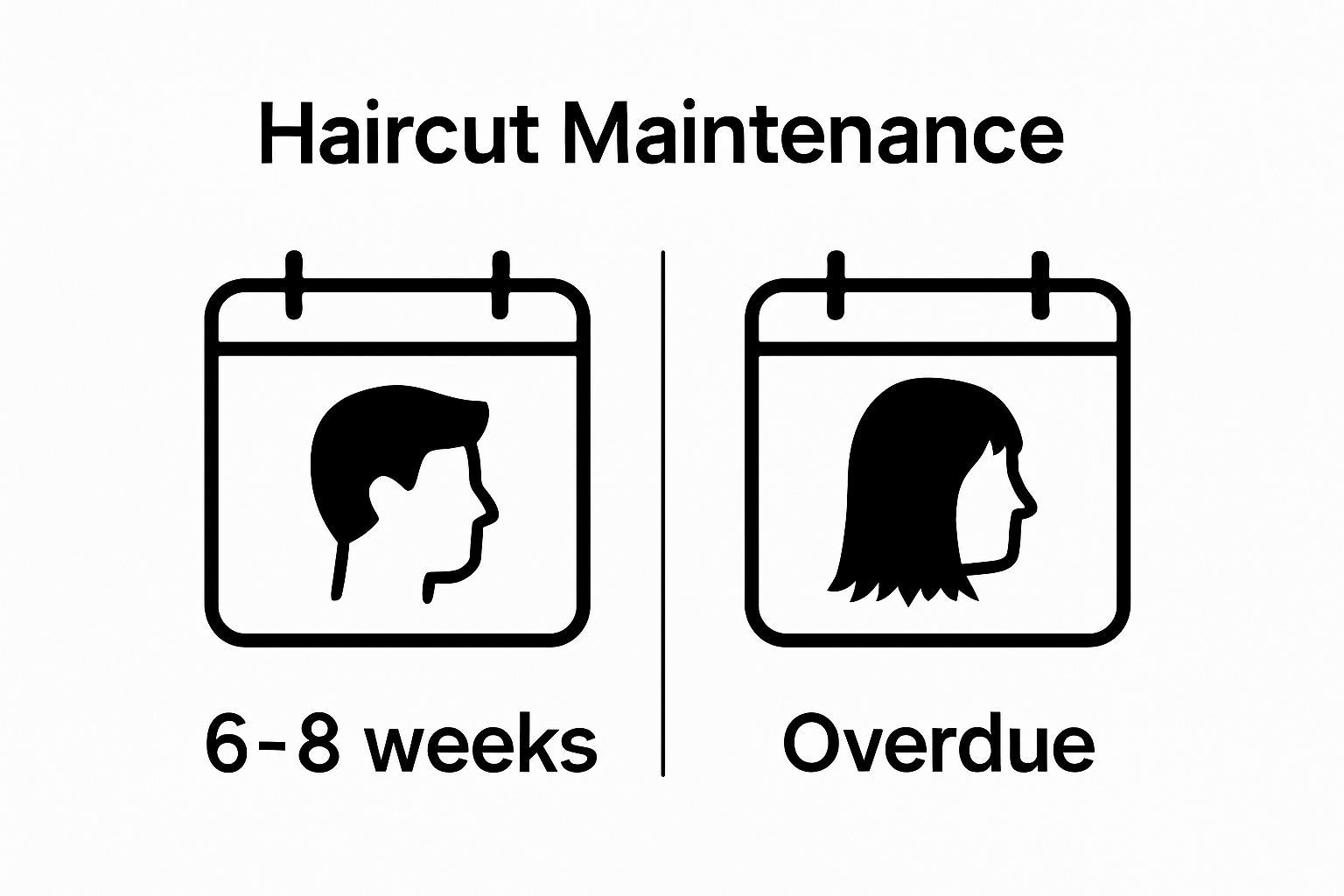
By understanding these signs, you can proactively maintain your hair’s health, ensuring it remains vibrant, manageable, and aesthetically pleasing.
Below is a table summarizing the typical signs that signal you may need a haircut and their associated explanations, helping you identify when to schedule your next trim.
| Sign | Explanation |
|---|---|
| Split ends | Fraying at the tips compromises structure, leading to weaker, less shiny hair. |
| Rough, brittle texture | Hair feels coarse and breaks easily, often indicating accumulated damage. |
| Increased tangling | Damaged strands tangle more, making combing and styling difficult. |
| Lackluster appearance | Dull hair persists despite regular conditioning or product use. |
| Hair falling flat quickly | Styles lose shape quickly, signaling loss of volume and heaviness. |
| Uneven growth/unmanageable shape | Hair grows out unevenly, causing a messy look and styling challenges. |
| Increased maintenance time | More time needed for daily styling may indicate it’s time for a trim. |
Why Regular Haircuts Matter for Personal Grooming
Personal grooming represents more than aesthetic maintenance. It encompasses a holistic approach to self-presentation, professional image, and psychological well-being. Regular haircuts serve as a fundamental component of this comprehensive personal care strategy, extending far beyond simple hair maintenance.
Professional Image and First Impressions
Your hairstyle communicates significant information about your personality, professionalism, and attention to detail. According to Associated Barber College, personal grooming routines directly influence self-confidence and social perception. A well-maintained haircut signals several critical professional attributes:
- Discipline and self-respect
- Attention to personal presentation
- Commitment to professional standards
- Psychological readiness for challenges
Psychological Impact of Personal Grooming
Regular haircuts contribute substantially to an individual’s mental and emotional landscape. The process of maintaining one’s appearance goes beyond physical transformation, creating psychological benefits that enhance overall self-esteem. When individuals invest in their personal appearance, they experience improved self-perception and increased confidence.
Key psychological benefits include:
- Enhanced self-confidence
- Reduced anxiety about personal appearance
- Increased motivation and professional engagement
- Positive emotional state through self-care
Health and Hygiene Considerations
Beyond aesthetic and psychological dimensions, regular haircuts play a crucial role in maintaining hair and scalp health. Trimming removes damaged ends, prevents split ends from traveling up the hair shaft, and allows for early detection of potential scalp conditions. Professional stylists can identify early signs of hair or scalp issues during routine maintenance, providing an additional layer of personal health monitoring.
Strategic hair maintenance supports overall personal wellness by promoting:
- Improved hair texture and strength
- Reduced risk of hair damage
- Early detection of potential scalp conditions
- Optimal hair and scalp hygiene
By recognizing haircuts as an essential component of personal grooming, individuals invest not just in their appearance, but in their professional image, psychological well-being, and overall health.
How Hair Growth Patterns Affect Your Hairstyle Choices
Hair growth patterns are complex biological systems that significantly influence how individuals can style and manage their hair. Understanding these intricate patterns allows for more personalized and effective hairstyling strategies that work harmoniously with natural hair characteristics.
Fundamental Hair Growth Characteristics
Each person’s hair possesses unique growth patterns determined by genetic factors, follicle structure, and physiological conditions. According to the International Journal of Trichology, these patterns include critical elements that directly impact styling possibilities:
- Hair growth direction and angle
- Follicle density across scalp regions
- Individual strand thickness and texture
- Natural hair curl pattern and elasticity
Scalp Topography and Style Compatibility
The scalp’s unique topographical landscape plays a crucial role in determining hairstyle potential. Different regions of the scalp exhibit varying growth directions, densities, and strand characteristics. Professional stylists analyze these nuanced patterns to recommend styles that complement natural hair behavior, ensuring more manageable and aesthetically pleasing results.
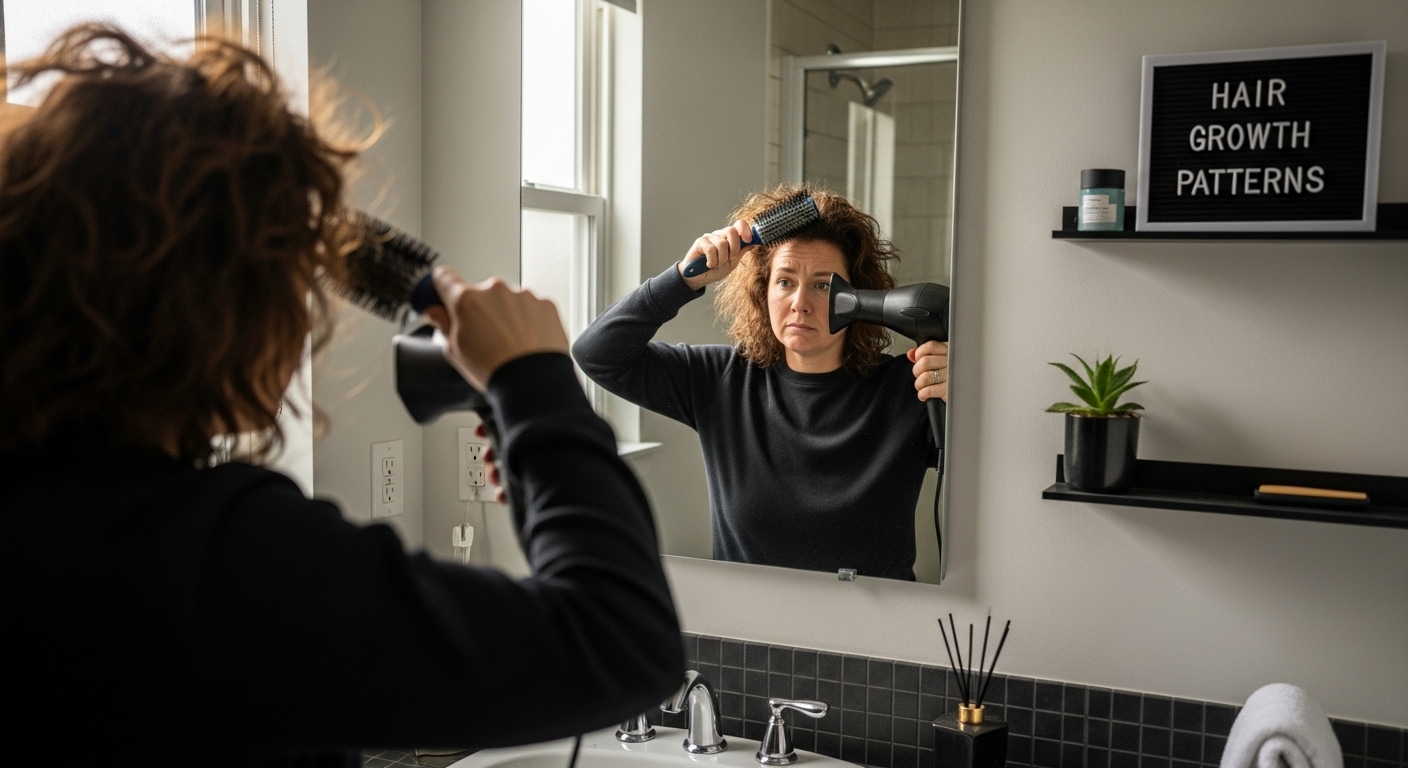
Key considerations for matching hairstyles with growth patterns include:
- Identifying cowlick locations
- Understanding natural hair fall
- Assessing potential styling limitations
- Recognizing individual hair strand characteristics
Adapting Styles to Natural Hair Behavior
Successful hairstyling requires working with, rather than against, inherent hair growth patterns. This approach minimizes styling stress, reduces potential hair damage, and creates more sustainable hair maintenance routines. By understanding individual hair growth characteristics, individuals can select cuts and styles that enhance their natural hair texture and movement.
Strategic style adaptation involves:
- Choosing cuts that follow natural hair growth direction
- Selecting styling techniques compatible with hair texture
- Minimizing excessive heat or chemical treatments
- Embracing individual hair characteristics
By recognizing and respecting unique hair growth patterns, individuals can develop more personalized, effective, and confidence-boosting hairstyling approaches that celebrate their natural hair attributes.
The Impact of Hair Health on Style and Appearance
Hair health represents a critical foundation for achieving desired styles and maintaining an attractive, confident appearance. Beyond mere aesthetic considerations, the condition of your hair directly influences styling potential, personal presentation, and overall visual appeal.
Structural Integrity and Style Potential
The fundamental structure of healthy hair determines its capacity to hold styles, respond to styling techniques, and maintain visual integrity. According to the International Journal of Trichology, hair health impacts multiple aesthetic and functional dimensions of hair styling:
- Capacity to retain moisture
- Resistance to breakage and damage
- Ability to hold complex styling techniques
- Natural shine and texture maintenance
Visible Indicators of Hair Health
Professional stylists recognize specific visual and textural signals that reveal underlying hair condition. These indicators provide immediate insights into hair’s styling potential and overall health. Understanding these signs enables more strategic hair care and styling approaches, ensuring optimal appearance and manageability.
Key visible health indicators include:
- Consistent hair strand thickness
- Smooth, aligned cuticle structure
- Absence of excessive split ends
- Uniform color and shine
- Minimal tangling and breakage
Nutrition and Hair Performance
Hair health extends beyond external treatments, deeply connecting with internal nutritional status and overall physiological wellness. Proper nutrition supports hair follicle strength, promotes consistent growth, and enhances the hair’s natural ability to maintain style and appearance.
Nutritional factors influencing hair health encompass:
- Protein intake for keratin production
- Adequate hydration
- Essential vitamin and mineral consumption
- Balanced hormonal levels
- Stress management
By recognizing hair health as a comprehensive system involving external care, nutritional support, and strategic styling, individuals can transform their approach to hair maintenance, achieving more vibrant, resilient, and stylish results.
Understanding Hair Texture Changes and Their Significance
Hair texture is a dynamic biological characteristic that evolves throughout an individual’s lifetime, influenced by a complex interplay of genetic, environmental, and physiological factors. Understanding these transformations provides crucial insights into personal hair care strategies and overall hair health management.
Genetic Foundations of Hair Texture
Genetic predispositions form the primary framework determining an individual’s inherent hair texture. According to MedlinePlus Genetics, specific genes like EDAR, FGFR2, and TCHH play pivotal roles in defining hair characteristics. These genetic markers significantly influence:
- Hair strand thickness
- Curl pattern intensity
- Overall hair strand structure
- Follicle shape and orientation
Environmental and Physiological Influences
External and internal factors substantially contribute to hair texture transformations. Hormonal changes, nutritional status, medical treatments, and lifestyle elements can progressively modify hair’s fundamental structure. Professional stylists recognize that texture alterations are not static but represent a continuous, dynamic process reflecting broader health conditions.
Significant factors driving hair texture changes include:
- Hormonal fluctuations during life stages
- Nutritional deficiencies or metabolic shifts
- Medication side effects
- Chronic health conditions
- Environmental exposure
Age-Related Texture Modifications
As individuals progress through different life stages, hair undergoes predictable structural transformations. Aging introduces molecular changes that directly impact hair texture, thickness, and overall appearance. These modifications result from complex cellular interactions involving hair follicle stem cells, melanocytes, and underlying genetic mechanisms.
Key age-related hair texture characteristics include:
- Gradual thinning of hair strands
- Reduced pigment production
- Increased brittleness
- Changes in curl pattern
- Reduced overall hair density
By comprehending the multifaceted nature of hair texture changes, individuals can develop more nuanced, personalized approaches to hair care, embracing the natural evolution of their hair’s unique characteristics.
Here is a table outlining the major factors that affect hair texture, organized by their category and effect, allowing you to better understand changes in your hair over time.
| Factor Category | Example Factors | Effect on Hair Texture |
|---|---|---|
| Genetics | Genes (EDAR, FGFR2, TCHH) | Determines natural thickness, curl, and strand structure |
| Environmental/Physiological | Hormonal changes, nutrition, medications | Alters texture via internal/external changes |
| Age | Cellular aging, reduced pigmentation | Thinning, increased brittleness, and changes in curl pattern |
| Health Status | Chronic conditions | Can weaken or change texture depending on underlying health issues |
| Lifestyle | Stress, exposure to environmental elements | May cause temporary or permanent texture changes |
Give Your Hair the Attention It Deserves in La Jolla
Tired of noticing split ends, unmanageable texture, or hair that has simply lost its shape? The article highlighted the frustration of dealing with dull strands and daily styling challenges—clear signs that your hair is asking for expert care. At Joel C Ma Hair Studio, we specialize in personalized haircuts and treatments that restore life, shine, and confidence. Dive deeper into our range of services by exploring our Uncategorized Archives – Joel C Ma Hair Studio to see how others have transformed their look with professional intervention.
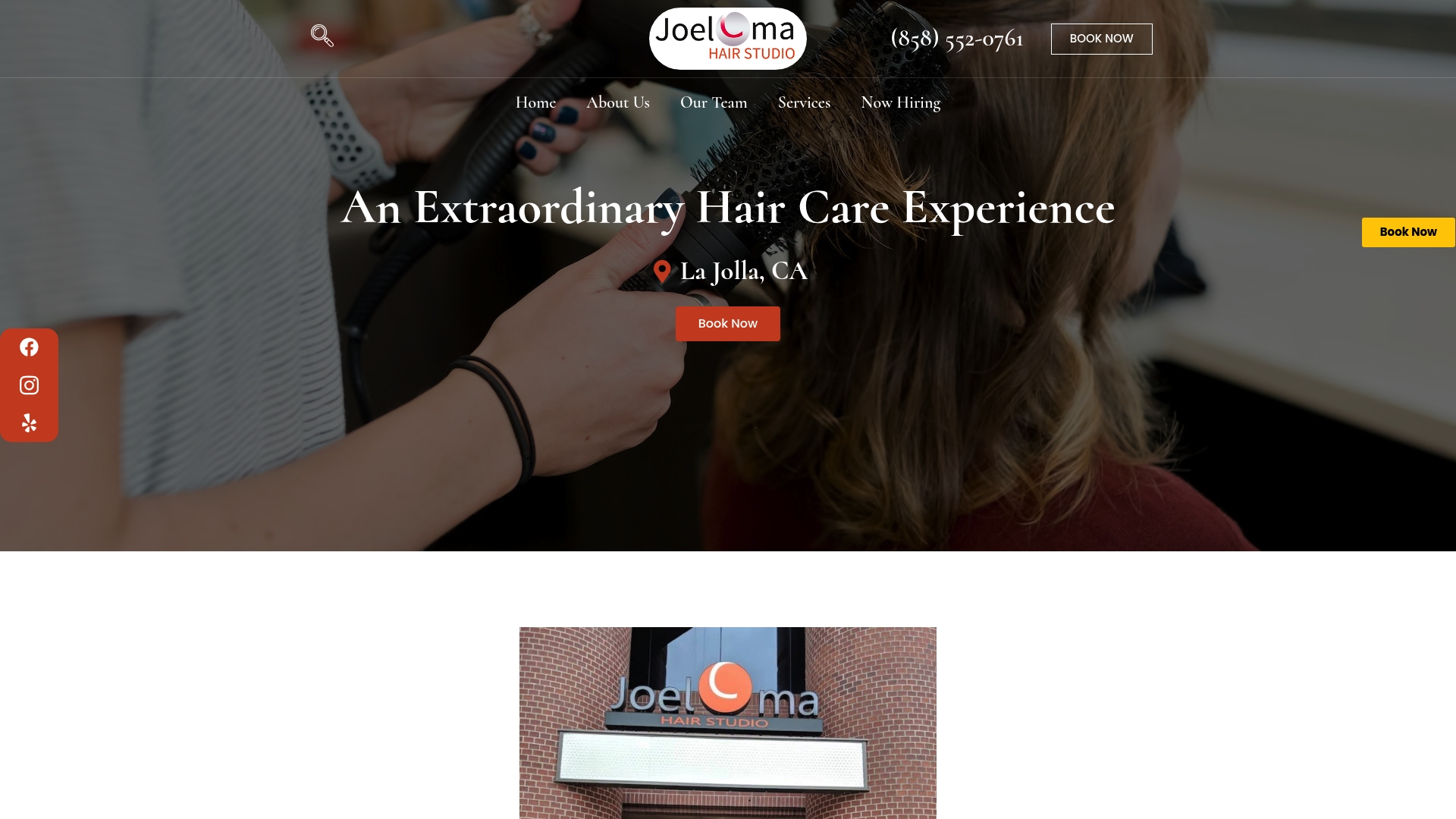
Book your appointment with our highly skilled team today. Experience the difference that 25 years of expertise and a passion for artistry can make for your hair. Visit Joel C Ma Hair Studio now to secure your spot and let your next haircut be the one that truly makes a difference.
Frequently Asked Questions
What are the most common signs that I need a haircut?
You may need a haircut if you notice split ends, rough texture, increased tangling, styling challenges, or a lack of volume and movement in your hair.
How often should I get a haircut to maintain healthy hair?
Most hair experts recommend scheduling a haircut every 6-8 weeks to prevent split ends and maintain your desired style while ensuring optimal hair health.
Can a haircut improve my styling routine?
Yes, a fresh haircut can significantly improve your styling routine by making hair more manageable, enhancing its natural shape, and reducing the time required for daily maintenance.
How does my hair’s health impact the effectiveness of styling products?
Healthy hair retains moisture, resists breakage, and holds styles better, making it easier to use styling products effectively. Damaged hair may not respond well to products, leading to subpar results.


